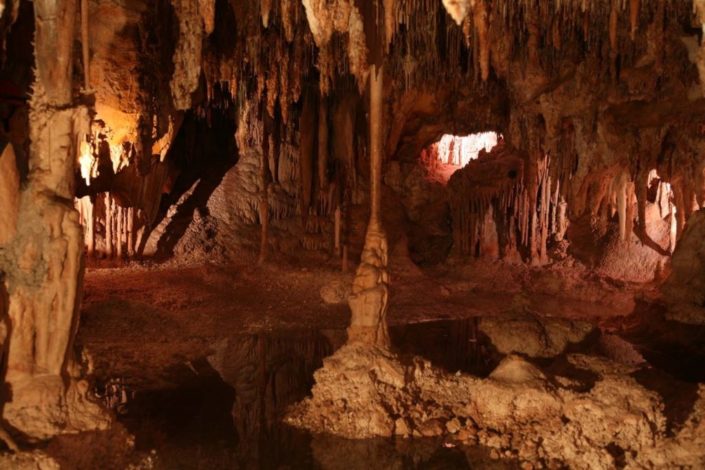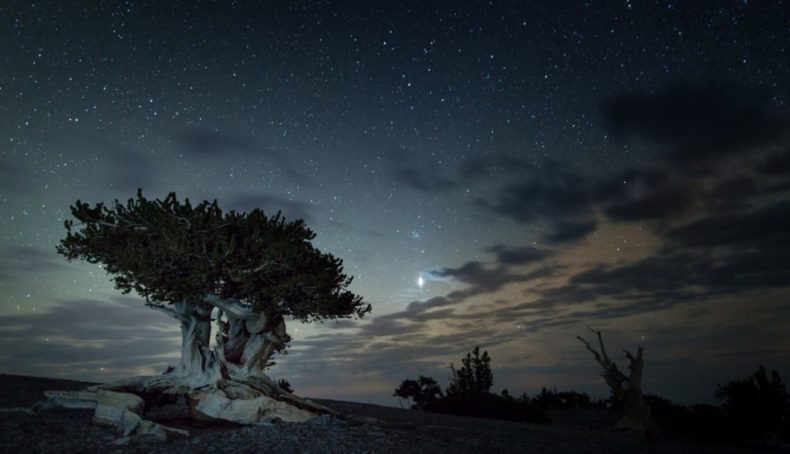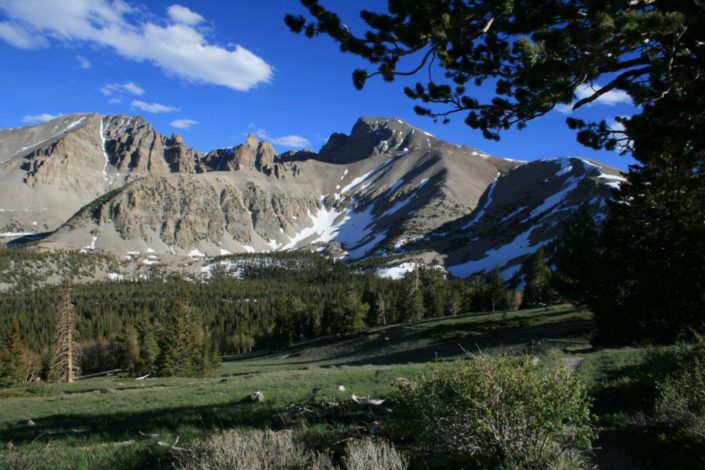Find Your Park in July: Great Basin National Park, Nevada
Every national park – big or small, obscure or well known, nature mecca or historic monument – is worth visiting with a family. But there are a few special places that seem to give you more bang for your buck. A few gems where, instead of settling for the shorter or easier hikes because of the kids, the best hikes are short and kid friendly. Great Basin National Park in Nevada is one of those rare places.
Never heard of it? You are not alone! Its location in the Great Basin Desert – three hours west of Salt Lake City, Utah, and five hours north of Las Vegas, Nevada - keeps it well out of the way of most travelers. But for those willing to make it a destination you will find 13,000 foot Wheeler Peak harboring the country’s southernmost glacier, bristlecone pine trees (the world’s oldest living organisms), ornate Lehman Caves with unique formations not found anywhere else, sagebrush, deep silence, and dark night skies. Campgrounds rarely fill here, and even in the middle of July you can have a trail entirely to yourself.
The Great Basin region covers a vast area of the west, from Utah to California, from Arizona to Oregon – a region in which no water ever leaves. Instead of draining to an ocean, all precipitation that falls in the Great Basin, stays in the Great Basin. Most of that falls in the form of winter snow, but summers in this high desert are warm and sunny. Be sure to stop at the Great Basin Visitor Center in Baker, Nevada, outside the park the explore the hands on exhibits and learn more about this unique region. And don’t miss the Wheeler Peak Scenic Drive to over 10,000 feet with stunning views of surrounding mountains and valleys. Services are really few and far between here, so the best strategy is always to fill up on gas and food at a grocery store before leaving civilization. There is a yummy café at the Lehman Caves Visitor Center during the summer that makes an excellent stop for lunch or ice cream after a hike!

When you’re ready to hit the trail, here are a few of my favorites:
Island Forest Trail – Located at the end of the Wheeler Peak Scenic Drive, this .2 mile handicap accessible trail winds through a beautiful aspen grove at over 10,000 feet elevation .
Bristlecone Pine Trail – Walk among the oldest living things on earth on this 2.8 mile stroll. A short walk beyond the grove brings you to the country’s southernmost glacier!
Alpine Lakes Loop – In just over 2 ½ miles you can hike to two postcard perfect alpine lakes at the base of towering Wheeler Peak. Because you begin your hike on the Wheeler Peak Scenic Drive at 10,000 feet, elevation gain is minimal!
Baker Creek Trail – This 2.5 mile loop hike is one of my favorite all time trails anywhere. It begins in a sagebrush meadow with a snow capped peak in the background, climbs through profuse wildflowers into an aspen grove that is stunning in the fall, crosses a mountain creek, wanders through ponderosa pines, a high mountain meadow, then back across two bubbling mountain streams back at the trailhead. It has it all in less than 3 miles.
Lehman Caves – How about a hike in a cave? The Lodge Room Tour is only .4 mile and ideal for families with young children (Note that the minimum age for a cave tour is 5 years old).
In honor of the National Park Service’s 100th birthday this year you can join in Great Basin, Great Inspiration on August 12-13th, a two day series of artist workshops where you can learn more about night sky photography, writing, painting, cowboy poetry, ceramics, fiber and more.

In September you can join in the Great Basin National Park Astronomy Festival, a family event with unforgettable star gazing. The park has some of the best air quality in the nation, which translates to excellent night skies. Solar telescopes set up during the day, dozens of telescopes up at night, ranger programs just for kids, and a chance for the little ones to earn their Deep Space Certificate are just a few reasons to go!
Ready to find true solitude with the family this summer? Then check out Great Basin National Park – I promise you won’t be disappointed! Visit www.nps.gov/grba to start planning your trip.
Alana is a park ranger turned homeschooling mom of three. With her park ranger husband she’s raising her kids in America’s most beautiful places. She loves hiking, camping, photography, books, coffee shops, farmers markets, gardening, and backyard chickens. She is the Branch Ambassador in Eatonville, Washington, just outside Mount Rainier National Park.
Related Content





Comments